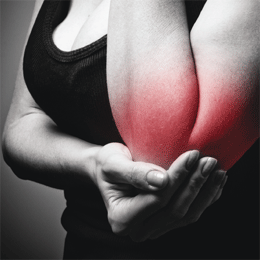
The world of medicine is ever-changing and, lucky for us, it seems doctors are creating new methods, technology and care processes every day. South Jersey Magazine recently spoke with some area professionals in the realm of orthopedics and sports medicine to see what is new to their practices and how they vary from patient to patient.
When choosing a specialist to see in regard to issues such as neck, shoulder or back pain, people are generally hit with the hard decision of choosing between a chiropractor or an orthopedist.
“From a patient standpoint, [they] should always consider a conservative care specialist like a chiropractor first and if the chiropractor feels as though their problem needs to go to a surgeon, the patient would then be sent to the surgeon,” says Dr. Michael O’Keefe, owner of O’Keefe Chiropractic Center.
The conservative approach refers to pain in the body that a patient wouldn’t necessarily know the cause of. For fractures and breaks, a patient should go straight to an orthopedist for medical care. O’Keefe says he doesn’t see just one type of patient. “We treat young athletes, middle school and high school athletes, all the way up to senior citizens. Orthopedic problems are not unique to any one age group.”
Dwight Healy, MSPT, outpatient team lead at Marlton Rehabilitation Hospital, says one of the vital roles he serves is that of patient educator and patient advocate.
“We try to educate the patient about what to expect functionally after an orthopedic surgery. We try to educate to the level of the patient,” says Healy.
Healy says one of the new and upcoming areas in orthopedics is the way total hip and knee replacements are being performed in a more minimally invasive manner.
“The posterior approach to the total hip replacement is the most common procedure. However, it involves cutting the gluteus medius muscle which certainly impacts the patient’s walking after surgery,” says Healy. “Many patients spend four to-six weeks using a walker before transitioning to a cane.”
With the anterior approach to the total hip replacement, Healy says the patient usually walks with a single point cane sometimes the day of the surgery. Many patients with the anterior approach go home the next day after surgery; some the same day. Healy says he has seen patients that are walking with no assistance within two to four weeks and that baseline activity level is achieved in a shorter time frame. Healy also says pain levels are much lower with the anterior approach com- pared with that of the posterior because there is no disruption of the muscle tissue.
At South Jersey Radiology, director of body imaging, Dr. Gregory J. Goodworth has a high-field 3 Tesla magnet MRI, a very powerful machine that allows him to see very small structures in high detail. Goodworth says orthopedic doctors can now see small structures like cartilage and small ligaments especially inside fingers and thumbs, wrists, feet, toes and knees.
“The way that it helps [orthopedists] is it can really confirm or deny what their clinical suspicion is. And for patients they would have historically operated on, they no longer need an operation,” says Goodworth. “Or, if they need an operation, it will tell [the orthopedists] exactly what to expect when they get in there.”
Goodworth says this level of technology has become a big deal because in the past orthopedists really had no idea what was going on inside structures without opening patients up and taking a look to see what was damaged. “Now, we can see all of those structures very clearly and really tell them what they need to see in terms of helping for diagnosis of the trauma or in diagnosis of the injury and how to plan the course of action to repair it for the patient,” says Goodworth.
Dr. Sean McMillan, chief of surgery and chief of orthopedics at Our Lady of Lourdes utilizes a new technology called the mi-eye diagnostic test.
“The mi-eye diagnostic test is basically a small needle that we can use to look inside someone’s joint whether it’s a shoulder or a knee or ankle,” says McMillan. “Then we can look for pathology like a meniscal tear or a rotator cuff tear.”
By using a local anesthetic, the area around the joint is numbed and the small needle is inserted and is hooked up to an iPad so once it is connected, patients can look and see into their joints in real time as McMillan explains what they are seeing and where their problem is.
“Orthopedics is really changing right now,” says McMillan. “So we are really emphasizing a focus on biologics and biologic healing.”
McMillan says one of the other interesting things being offered now is biologic rotator cuff repairs. This is where they use a bioinductive implant or a patch to help the rotator cuff heal itself. The bioinductive implant is used on high-grade tears and stops doctors from using the old method of completing the tear fully and then having to sew it back to the bone of the unit. “It basically allows it to thicken back up and what’s neat about that is the recovery time is more than cut in half than the old rotator cuff [process],” says McMillan.
As technology continues to push the boundaries of high-quality medical care, it’s evident that South Jerseyans are reaping the benefits.
Published (and copyrighted) in South Jersey Magazine, Volume 13, Issue 3 (June, 2016).
For more info on South Jersey Magazine, click here.
To subscribe to South Jersey Magazine, click here.
To advertise in South Jersey Magazine, click here.











